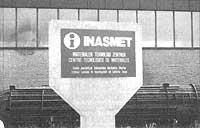Ikerlan: transferring technology to the company
1989/06/01 Aizpurua Sarasola, Joxerra Iturria: Elhuyar aldizkaria
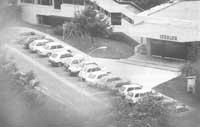
When the recorder is turned on for a conversation, it is often not known if the recording will last a quarter of an hour, an hour or two hours. Although the information provided by Pedro Etxabe (Marketing Director of Ikerlan) in our magnetophone occupied an hour and a half booth, we have found it very difficult to summarize the compact information that has provided these few pages. Perhaps this has occurred to us whenever we have reported from research centers. It seems that these centers impose on industry a degree of philosophy and rationality, and that they play in industry as important a role as strategies play in political parties.
History
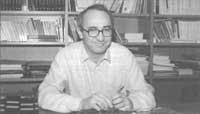
Ikerlan was born in 1974 with the union of three different forces. On the one hand, the cooperative movement, which would later contribute the basic capital of Ikerlan. On the other hand, Caja Laboral Popular, which later had already built its house in Ikerlan. Finally, there was a research team of about six years, which would later be the engine of Ikerlan.
Before doing anything we analyzed what was in the environment, that is, if there were research centers and of what type. At the same time, the problems or technological needs of the companies in the environment were detected. After the analysis, the selected work areas were three: machine tool, electronics and appliances. The initial team consisted of six people. Most were teachers of the Polytechnic School of Mondragon and there they continued until the construction of the house of Ikerlan. This happened in 1977. The House was built by Caja Laboral Popular and was the contribution of this entity to the Ikerlan project.
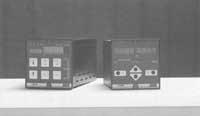
In those early years, training in technologies selected by this group of people was very important. Therefore, the collaboration of partner companies was essential to meet the annual budget. They paid about 85%. Another 15% were covered by company services.
For five years, Ikerlan worked without legal personality until he found that he was able to function as a company.
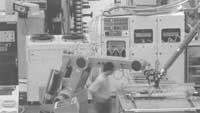
The first contacts with the Public Administration in the pre-autonomous era. These relations materialized in 1982, when the Basque Government created a legal figure called “protected entity”. Through this image the entity presents several projects in the Basque Government that cover between 40% and 50% of the budgets of this entity. These projects are called “generic” and aim to advance and gain experience in the technological areas developed by the center. This system was not an invention, as it was implemented in several European countries.
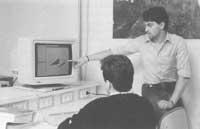
The first agreement was signed for five years. Therefore, in 1987 it had to be renewed.
So far the organization of the organization has been explained. The technological history will be reviewed below.
The story is marked by Ikerlan's goal. The goal is to “transfer new technologies and their use to the industry.” Consequently, the first work done in 1976 was the microprocessor necessary for the control of an Industrial Robot. Therefore, two works were worked together, the microprocessor and the robot. In 1979, CAD/CAM began work and in 1984 the field of technological diffusion began. Three topics are covered in this last area: microelectronics, robotics and CAD/CAM. Courses of one, two or three days are offered. The aim of these courses is to reach companies that cannot reach through conventional work projects. In recent years microelectronics has been discarded in these courses, a topic addressed by the Bilbao School of Engineers.
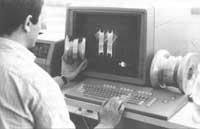
In 1986, with the incorporation of Spain into the European Economic Community, the opportunity was presented to take another step, to participate in European projects. After entering the EVE, they began to participate in the project called ESPRIT. The participation in this project was very important for Ikerlan, as it was a continuation of a project developed until then. Elhuyar has known this project. It is broadcast in number 20 of Science and Technology.
Projects aimed at companies are currently one of the widest areas of work. There have been more than two hundred projects developed and Etxabe told us that all of them are “conditioned”, that is, in each project, together with those of Ikerlan, the technicians of the company have to work. The goal of working like this is for the technician to become aware of the technology while developing the project.
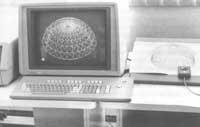
Otherwise, Ikerlan's goal would hardly be met, that is, the transfer of technology to the company. Regarding the type of project, the most appropriate word is abundance. Numerical controls for both machine tools and other types of machines, industrial robots, coin selection machines, telecámaras, etc. are indicators of the abundance of projects. Applied research is therefore Ikerlan's field of work. We do not put ourselves on the limit of science. Basic research is done at the university and we transfer the advanced to the company.
Resources
When we reached the budget section, the numbers indicated quite clearly the strength of each of the aforementioned work areas. The distribution of funding for 1988 is as follows:
General projects | 245,000,000 pesetas. |
Investments 82,000,000 pts.
Compared to the 1987 data, there has been an increase of 22%, but the collection by specific projects of companies has grown by 27.4%. Investments have been financed from two different sources. The most important part has been financed by the Public Administration and the rest by IKERLAN. The Basque Government finances the necessary investments for general projects. From Madrid you also get a part.
This initial IKERLAN working group has now become:
- Senior graduates. ..........................................................................................................................................................................................................................................................
- Media graduates. ..........................................................................................................................................................................................................................................................
- Fellows (Senior Graduates). ... .. .. .. .. .. .. .. .. .... Services
- Others. ..........................................................................................................................................................................................................................................................
TOTAL 125
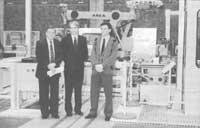
On the left the two European visitors. Right Arroiabe, from Ikerlan.
These data indicate the number of people working throughout the day. However, there are employees who work several hours. Normally this working group consists of teachers and students of the Polytechnic School of Mondragon.
Future
I believe that the Basque Government will continue to promote the idea of a protected entity. Because this model is maintained in Europe and, after all, we are providing a public service, so the whole industry is the winner when we ask you how you saw the future.
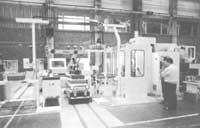
The coordination organization created a couple of years ago among research centers must be strengthened to better plan the research needs of the Basque Country and be able to reach a broader framework.
The trend towards companies will go in the same line as the current one, that is, they will continue to work in the current areas of work and other actions will be promoted that may be relevant for the future. Therefore, the development of telecommunications will be one of the future challenges for IKERLAN. For this purpose, a five-year planning has been completed, knowing that initially there may be personnel problems, as promotions will not begin to emerge until at least three years have elapsed since the engineering school of Bilbao.
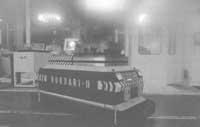
European projects will be another important field. Despite the economic importance of these projects, Pedro Etxabe highlighted another aspect: The relationship with companies in the North Basque Country. The relations between Ikerlan and several companies in the continental Basque Country are not current. However, since some European programs allow relations between the different countries of the Basque Country, it is intended to take advantage of this situation. It is the COMETT program. This program aims to encourage the exchange of information between the University and the Company, by countries. In the case of Euskal Herria, together with various public and private institutions of Hego Euskal Herria (including Ikerlan), various institutions of the continental Basque Country will be contacted.
We must not forget that we are in Euskal Herria with pride.
Working areaA) Electronics
B) CAD/CAM
C) Energy
Information
|

Gai honi buruzko eduki gehiago
Elhuyarrek garatutako teknologia




